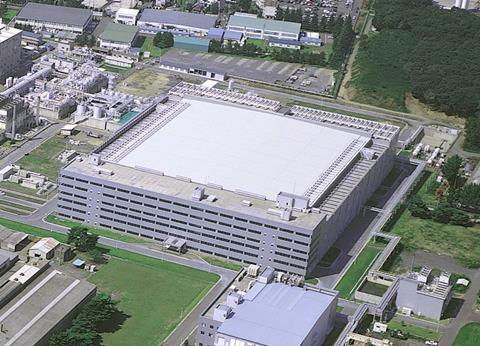A fire has stopped production at one of Renesas Electronics’ plants in Japan. Renesas Semiconductor Manufacturing, a subsidiary of the parent company, reported the fire at its Naka factory in Hitachinaka on the earlier hours of March 19.
The blaze, which was put out on the same day, caused damage to the N3 building assembling 300mm integrated circuits. There has been damage over a 600 sq.m area of the 12,000 sq.m clean room area on the first floor of the building. It has affected 11 units of manufacturing equipment, as well as utility equipment, such as the pure water supply and the air conditioning.

All work in N3 Building has been halted and is estimated to cost Renesas 17 billion yen ($156m) for every month it is closed. However, production at the N2 Building (200mm line) and the Wafer Testing Building is operating as usual and will continue product shipments, according to the company.
A press release from Renesas stated that the cause of the fire was an overcurrent in the plating equipment used to lay metal on the substrate of the integrated circuit.
“The casing of the equipment and the plating tank have relatively low resistance to heat, and the equipment ignited due to overcurrent,” said the company in a statement. “However, the cause of the overcurrent and the reason for the ignition is currently being investigated.”
Search for alternative sources
Renesas said it could not immediately manufacture or ship products usually made at the N3 Building by any other means, a problem made worse by the current high demand for products. There is a severe shortage in the supply of semiconductors to the automotive industry caused by supply imbalances stemming from the Covid-19 pandemic.

The automotive industry experienced greater fluctuations in 2020 than any other industry buying semiconductors. Vehicles are increasing in digital sophistication and the demand for microelectronics is high. At the same time, high demand from other industries led to capacity constraints in semiconductor facilities. The recovery in car sales and factory output that followed the first lockdowns was faster than projected across all regions, driven by pent-up demand during the lockdown period. The sector is now fighting to secure enough supplies and production stoppages are being reported globally. Semiconductor makers, including Renesas, are working overtime to meet this demand.
“Although approximately two-thirds of the products manufactured within N3 Building can be alternatively produced in-house or in foundries, due to the recent increase in demand for semiconductors, the situation does not allow for all products to be immediately produced alternatively,” said Renesas in the press release. “We will ensure to make considerations to produce as many products as fast as we can.”
The Renesas Naka facility was shut down temporarily in February by the new earthquake that hit the Fukushima region. The quake caused a temporary blackout at Renesas’ Naka factory, which led to a temporary suspension of production while teams investigated the safety and possible damage to equipment and products within its clean room.

























![Global[1]](https://d3n5uof8vony13.cloudfront.net/Pictures/web/a/d/s/global1_726550.svgz)












No comments yet